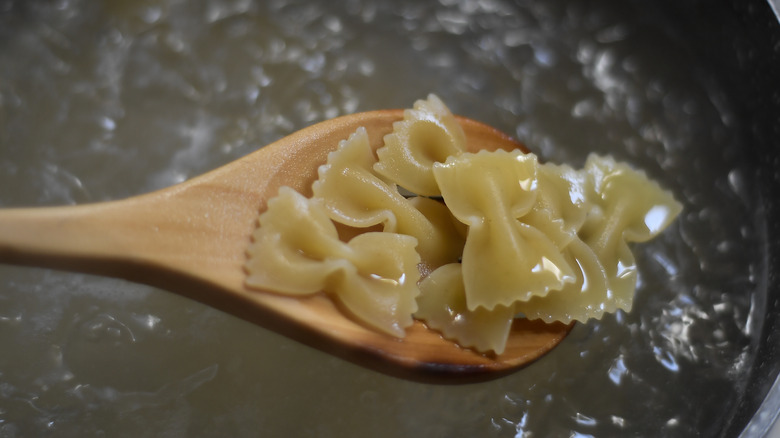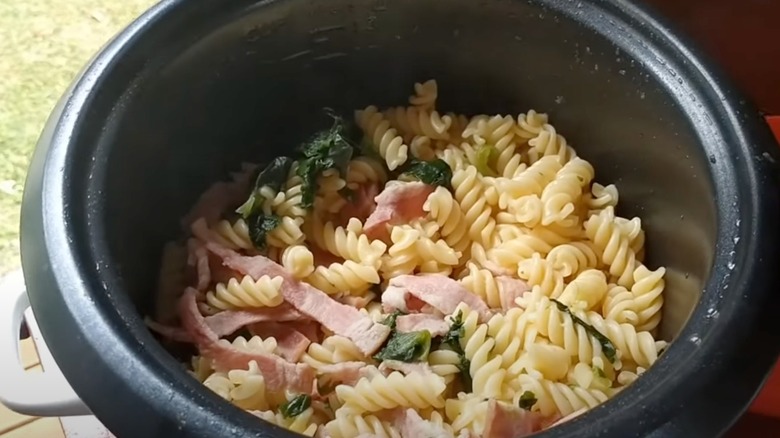The Unconventional Appliance You Can Use To Cook Pasta
For many pasta dishes, the most time-consuming part of making them is actually boiling the pasta. The rest of the dish generally comes together pretty quickly, especially if you're using the jarred sauces or even canned soup in a pinch, which works surprisingly well as a pasta sauce. However, when it comes to raw pasta, you first have to wait for that giant pot of water to come to a boil, then cook your pasta till it reaches the desired texture.
However, a rice cooker can significantly cut down the time it takes to cook pasta, mainly because you're not waiting for a large amount of water to boil. Instead, a measured amount of water is used depending on the amount of dry pasta you're putting in. If using a rice cooker, consider the shape of the pasta you're using, as you may have to break larger or longer noodles to fit in a rice cooker (apologies to any Italian food purists who are horrified at the prospect of snapping noodles in half).
Another unconventional step is to rinse the uncooked pasta before cooking to avoid clumping in a rice cooker. While you may have to occasionally check on the pasta as it cooks in this device, most if not all of the water will be absorbed or evaporate. This means that cooking pasta in the rice cooker also saves you from having to drain the cooked pasta. In short, this cooking hack can revolutionize your weeknight pasta dinners.
How to cook pasta in a rice cooker
Pasta expands significantly more than rice when cooked, which is an important consideration when using a rice cooker. So, ensure that the rice cooker is large enough to accommodate the cooked pasta (it will approximately double in size). Most servings are about 2 ounces of uncooked pasta.
Also, the amount of water you add to the rice cooker dictates the doneness of the pasta. Less water results in firmer cooked pasta. In general, add enough water to cover all the pasta, then another quarter inch on top. It may take a couple of tries to get the amount right, so check for doneness as the pasta cooks on your first few attempts. You should also salt the water, but with a lighter hand than you may use for stovetop pasta. Remember that in conventional pasta boiling, most of that salted pasta water is left behind. In the rice cooker, it is largely absorbed. If you need starchy water to combine the pasta with sauce, you can easily whip up a pasta water substitute with cornstarch.
Finally, set the rice cooker on the "cook" setting, then stir occasionally until the pasta reaches the desired doneness. You can even slightly cook pasta in the rice cooker beforehand, so whenever you're ready to eat, you can assemble your sauce and mix it in. If you plan to eat it later, give it all a stir to ensure your pasta doesn't clump together while it waits.

